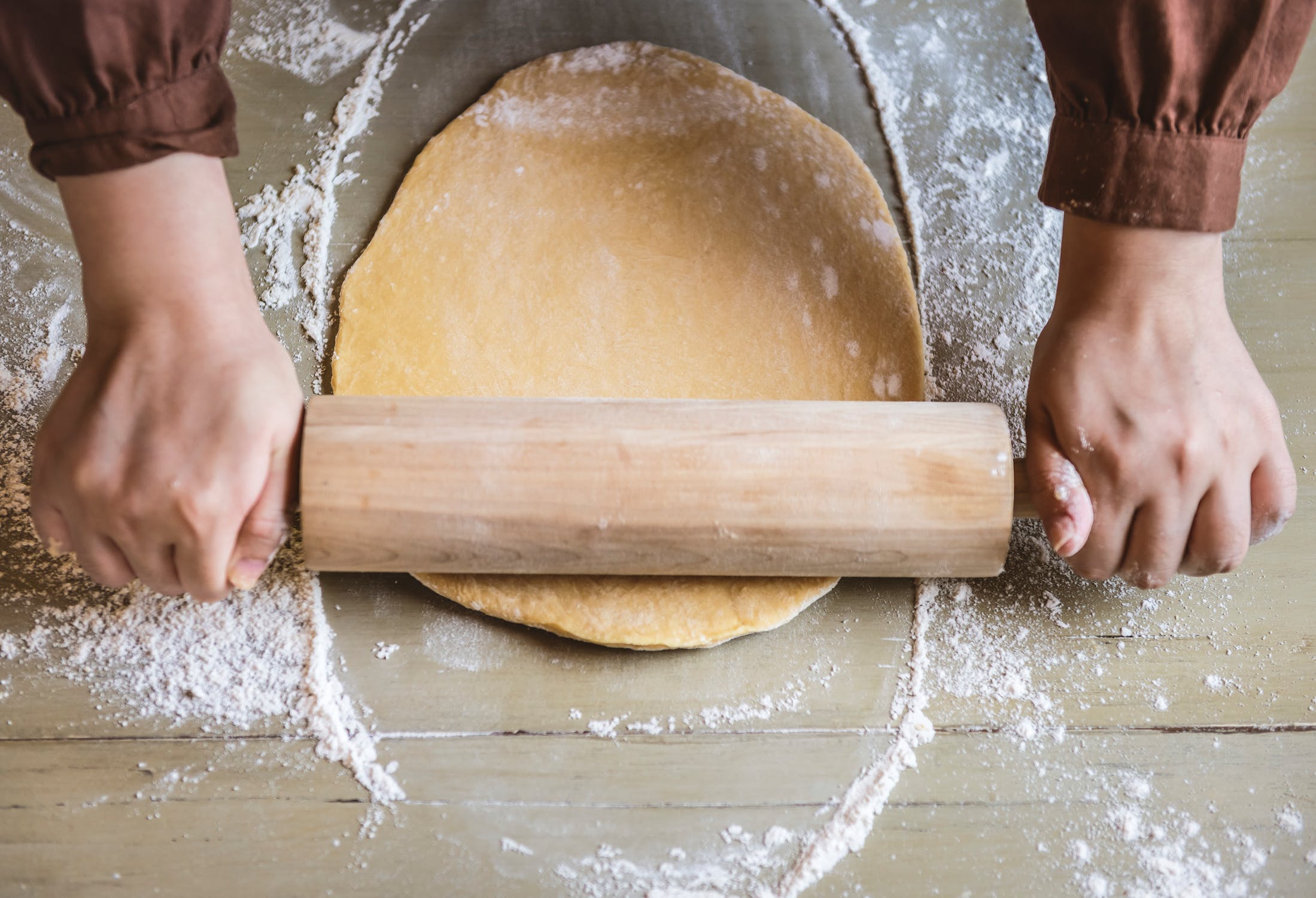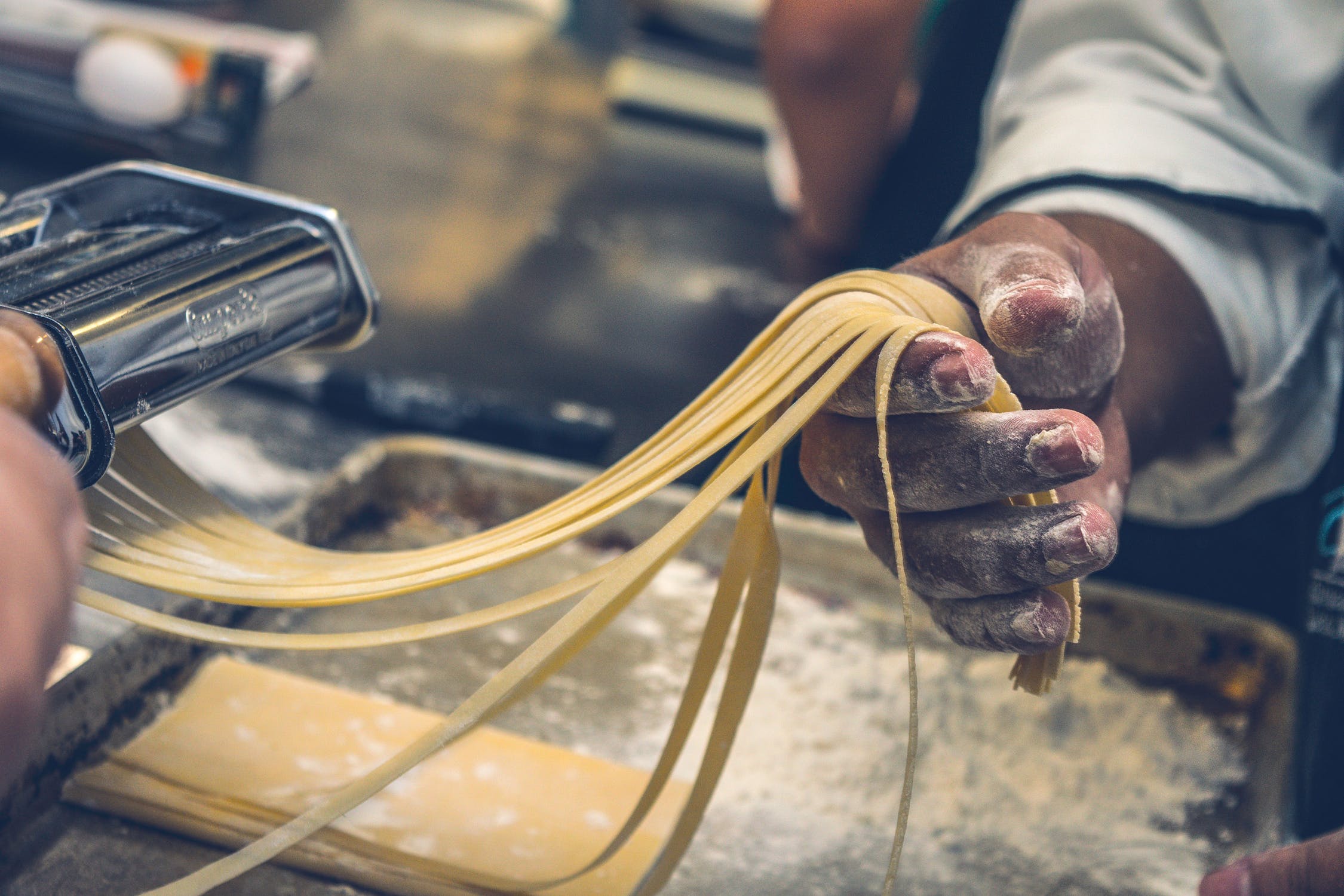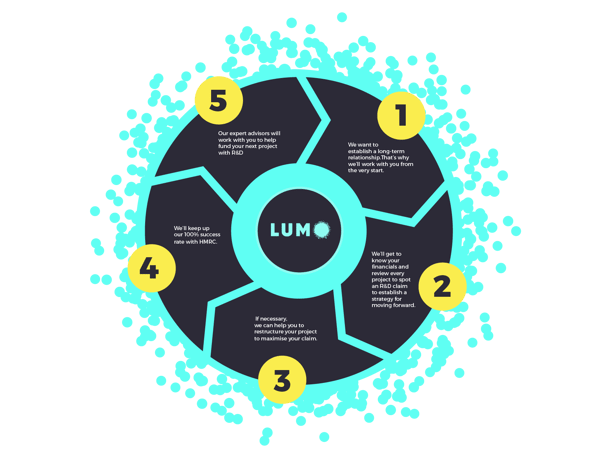The food and drink industry are serial under claimers in terms of research and development tax credits. There is a huge amount of R&D in this sector but far too many business owners don’t know enough about this valuable government incentive to make the most of it. But this is such a powerful tool at the disposal of food and drink manufacturers, distributors and retailers that it can’t be ignored any longer.
If you are involved in the food and drink industry, then you need to read this guide.
It’s as simple, as that. We are all busy people and it feels like we have a thousand and one things to do every day of our working lives (and plenty more on the days off in between.) So, taking some time to read a guide might not feel like a priority. The average size of a claim we make on behalf of our clients is over £35,000. We thought that might get your attention. Surely that’s worth fifteen minutes out of your day to check this out, share it with others in your business and discuss? Right, let’s go!
What is R&D tax credits for the food and drink industry?
That’s the best place to start. The government sees opportunity for UK business to compete on the global stage by becoming better at what they do. With Brexit on the near horizon, the importance of competing with businesses from across the world is heightened. They have come up with a solution that rewards a company that takes a commercial risk in order to become better at what they do. This is known as R&D tax credits.
If you do things to make your food and drink business better, then you will stand a great chance of being able to claim R&D tax credits for the food and drink industry today. This might include –
- Changing the ingredients you use to make your product healthier
- Coming up with a new flavour or variety
- Launching a new product from scratch
- Adding or replacing machinery to improve processes
- Researching new packaging or materials for the business
As you can see, there is a wide range of possible reasons you may have an R&D tax claim on your hands. And don’t think that this is an exhaustive list either. We find R&D tax claims for food and drink companies on a regular basis – even when they think that one doesn’t exist! Speak to the expert team at Lumo and find out how we can help you explore the R&D tax claims sat in your business, waiting to be uncovered.

Why does this apply to the food and drink industry?
R&D tax claims are available to any business that makes improvements to what they do. If you know someone with a business that has invested money in getting better at what they do, then get them in touch with us. We can investigate and show them the kind of claim they could be making. But the food and drink sector is ideally placed to make the most of this opportunity. It is one of the industries that faces constant change and development. This is just what the government is looking to reward.
Many food and drink companies manufacture their products. This means they are faced with change from a number of internal and external factors, such as –
- Changing consumer demand
- New legislation, rules and regulations
- Competition taking market share
- Wanting to launch a new product
- Adapting to save costs
This means that a process of research and development is pretty much a part of daily life for a food and drink company. You may not label what you do as R&D but it will almost inevitably be happening on one level or another. The traditional image of R&D is people in white coats working in a lab, standing over test tubes and collating results on a graph. We are helping the food and drink industry to fight that image. Research and development is about getting better at what you do by undertaking projects to bring about some of the improvements outlined above.
That’s what the government wants to know about. They use the HMRC to administer R&D tax credits through the Corporation Tax system. You can receive cash or money off your next tax bill. Either is hugely welcome and we will look in more detail about how this works for you later in this guide.

What does the HMRC want to know?
That’s a great question. In order to make a claim for R&D tax credits, you need to know what they are looking for. Well, it goes something like this –
- What money you spent on an R&D project
- What you actually did
That’s the two pieces of information you need to collect to get the ball rolling with the tax man. Sounds simple, doesn’t it? The first part you can put your hands on quite easily by speaking to your accountant. They should have detailed records of the money you spend as a business and what it is spent on. There is a form on the HMRC website that you will complete with all of that data.
The second part needs a little more thinking. The tax man wants to know the project you have undertaken and what challenges you faced. The criteria for an R&D tax claim is that you faced uncertainty in the project and had to work to overcome it.
With any R&D project, there is a certain degree of technical data that needs to be assessed and presented to the tax man in order for them to pay your claim. You will have a series of different steps undertaken to get to the end result. This should be documented thoroughly and in a language that the HMRC can easily understand and act upon. It all comes down to the words you use in that explanation. The way the HMRC define it is that –
‘R&D relief must be part of a specific project to make an advance in science or technology. It can’t be an advance within a social science like economics or a theoretical field like pure maths.’
But don’t worry about this definition – we know R&D tax credits inside out and can help you to work out what this means for your business. All it takes is a quick call and a chat. It only takes around half an hour of your time to assess the R&D tax claim in your food and drink business. There’s no obligation to use us and we charge no fee for this initial meeting. We can come to your office and will even bring a pack of biscuits if you want - let us know which you prefer!

What parts of my expenditure can I claim for?
This is where it gets really interesting! There are several areas on your balance sheet that can be part of a successful R&D tax claim, because they are involved in the R&D project. In this section, we take a look at what this means for the food and drink sector. There are some large costs here, that can make your R&D tax claim a large one. Let’s take a look –
Staff costs
This is always a big one! It is regularly the highest ongoing cost for any business. The people who work in our company are the lifeblood of what we do. In the food and drink industry this is a diverse range of roles. The ones we are looking at specifically here are those involved in the R&D projects. If you don’t have a definite list of the people involved in projects over the year then we can work this out together. You can make an R&D tax claim for the last 2 tax years in addition to the current one, so looking back that far might not give you a clear idea of exactly what happened. The people in your business involved with developing that new flavour or working on embedding a new piece of machinery will be those whose salary you can add to your claim.
Associated costs of staffing
It is easy to miss out on maximising your R&D tax claim if you don’t know that these can be added. The cost of employing someone isn’t just about the straight salary you pay them. There will be other associated costs involved, the two biggest usually being –
- Employers pension contributions
- Employers National Insurance contributions
Both of these can add a significant cost to your food and drink business, especially if you run a large payroll. Make sure you add these costs to your R&D tax claim, so you don’t miss out on vital cash coming back into your business.
Contractors
Sometimes you don’t have the expertise in your business to carry out all of the tasks. There ae some specialism related to your research and development project that you will need outside help for. Hiring a contractor will be another cost that can be included on your R&D tax claim. They help you with the technical aspects of your research and development project and as such should be included in the claim.
Materials
The item that many people think of first when they look at an R&D tax claim does often end up being one of the smaller parts of a claim. Materials in the food and drink industry are often the ingredients used when making up batches on new products. These might be given away in exchange for feedback or tested in a laboratory. The simple fact is that they have been produced with one thing in mind – research and development. The ingredients used in making these batches or sample should be added to an R&D tax claim.
In addition, there may be other materials used. You may test new packaging or storage equipment with the aim of getting better at what you do. This is also eligible for an R&D tax claim. Not all research and development projects as defined by the HMRC need to be successful for them to be part of a claim. You could look to develop a sugar free alternative to your existing product, go through the research and development process only to find that it just isn’t possible. This happens at times. These failed projects are also eligible for R&D tax credits as they sought an advance.
Check other costs
There may well be other costs associated with an R&D project that are specific to your business or your particular project. This is time for a reality check. Are there other items on your expenditure list that are related to the R&D project? Have you missed anything? Do you need to go back and check? It is far easier to double check all of your figures (your accountant will help you with this) than to try to go back after a claim is submitted and add items that you missed the first time around. Like any dealing with the tax man, you want it to be as clear and painless as possible.
If you want someone who has been down this road many times before to deal with your claim and ensure that you have every penny accounted for, then get in touch with the friendly team at Lumo. We know R&D tax for the food and drink industry better than anyone. We are here to help you get the most from a claim. The more money you get back into your business the better.

Are there deadlines?
As with any government scheme, there are timeframes that you need to work to. You can look back at the last 2 tax years as well as the current one, so when it nears that time there is a little pressure to get on with things. If you are in a rush but don’t feel like you have the time available to put a claim together them get in touch for our help. We can move quickly as long as we get the right information out of your business.
After that, the process takes anything from as little as 4 to 6 weeks for the HMRC to get the money back into your bank account. This timeline is shorter if you complete the documents thoroughly and make the explanation easy for them to follow and understand. This isn’t the time for technical jargon – just a solid explanation of what it is your business did.
What is the process for all of this?
The start of this is to understand that you have an R&D tax claim for your food and drink business. This will be relatively straightforward for you once you have read this article and got a grip of what they might mean to you and your business. Then you need to complete the relevant forms with the HMRC. You can claim the relief by entering your enhanced expenditure into the full Company Tax Return form, known as the CT600. This shows all of the money that was spent on your R&D project during that particular tax year. You must consider:
- The costs that can be directly attributed to the R&D work in your business
- Take any subcontractor costs or those for external staff members and reduce them to 65% of the original cost
- Add these two items together to get the total spent on R&D in the eyes of the tax man
- Times this figure by 130% and the result of this calculation is now an allowable deduction on your tax calculations
- Now add the original expenditure to this figure and you have the total enhanced expenditure figure for the tax return
This means that your R&D tax project is worth 230% of the money you paid out in terms of tax relief. This is a significant sum that will help your business to invest in the future. You see, the R&D tax claim lump sum can be used for any purpose at all. You can keep it in the business and reuse or take it from the business for yourself. Think about how much of a difference a cash lump sum in excess of £35,000 would make to your life or your food and drink company.

The second part of the process as far as the HMRC is concerned is to complete the explanation that we looked at earlier in this article. It is the vital piece of information that backs up the facts and figures. This is usually sent in the form of a report that shows what you did. Don’t forget that the HMRC is looking for an overview of –
- What you did in your R&D project
- Why it constitutes an advance in the food and drink industry
- What uncertainties you faced
- How you overcame those uncertainties
- That the solution couldn’t have been easily worked out or was already available
These are the questions that the tax man wants answers to so make sure you have covered all of these with the report you send through. If you don’t answer the questions, then either your claim will be rejected or the HMRC will come back to you and ask more questions. We think it is safe to say that you don’t want the HMRC taking a closer and closer look at your business and the finances.
Stay in control of the process by sending all that the tax man needs – and nothing that they don’t!
What happens next?
The HMRC will assess the information you have sent and then make a decision. It could be one of three things –
- They accept your claim and pay out the money – this could be as little as 4 to 6 weeks
- They reject your claim outright and inform that you don’t have a valid R&D tax claim
- They ask more questions, so they can clarify and come to one of the two decisions above
So, the whole process (and what happens next) depends on the decision that the tax man comes to.
Why use a company like Lumo?
With all the information we have given you in this article, you could wonder why you would use a company like Lumo to do all of this for you. This is a fantastic question, and one that we will answer here. Some of the reasons why you would use us include –
A trusted adviser
Like many of the aspects of your food and drink business, you look for outside help when you face something you are uncertain about. You wouldn’t attempt to carry out the legal work of your business, rather rely on a qualified solicitor. It is the same with R&D tax credits. This is all we do. This our job day in and day out – to secure R&D tax credits for our clients. If you want to give this task to an expert, then drop us a line.
There aren’t enough hours in the week
You are busy. There are a hundred and one different task that need to be completed and all of them feel as urgent as the next. Starting from scratch learning about R&D tax credits, what they mean to your business and how to make an application will eat into this time. Don’t put yourself under this pressure, especially if the clock is ticking on the deadline for a claim. Let us take the strain and free you up to spend time on the important parts of your business that need your attention.
Maximising a claim 
One of the main reasons our clients tell us they use Lumo for an R&D tax claim is that they don’t want to miss out on vital areas of expenditure that maximise their claim. As we keep on top of the latest advice from the HMRC, we are able to ensure that the claim is as full as can be. Don’t let some of the money that should come to your business slip through your fingers.
No win, no fee and free no obligation check
What have you got to lose? We don’t charge a penny to sit down and talk to you about your R&D tax claim. We get to know the busies and let you know if we see a claim in there. Let us tell you that we often do! There is no obligation to use our services after this initial meeting. All we want to do is have the opportunity to help you. And then if you do choose to work with us we don’t charge a fee until the money is safely back in your business. It’s a no win, no fee service that we offer. With a 100% success rate in R&D tax claims with the HMRC we are confident that we will secure the money that your business deserves. If we don’t get it, then you don’t pay a thing.
The food and drink sector is an important one in the UK economy and the government recognises that in the tax incentive that R&D tax credits offer. We at Lumo can see this as a great opportunity for food and drink businesses to get some cash back from the tax man and move their operation forward.
If you would like to discover if you have a claim, get in touch with us today - you won't be disappointed.
